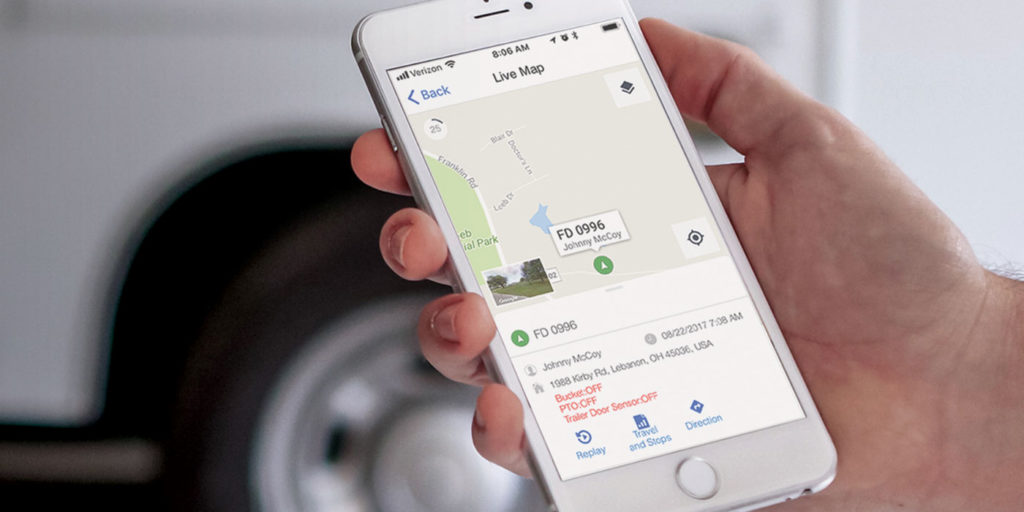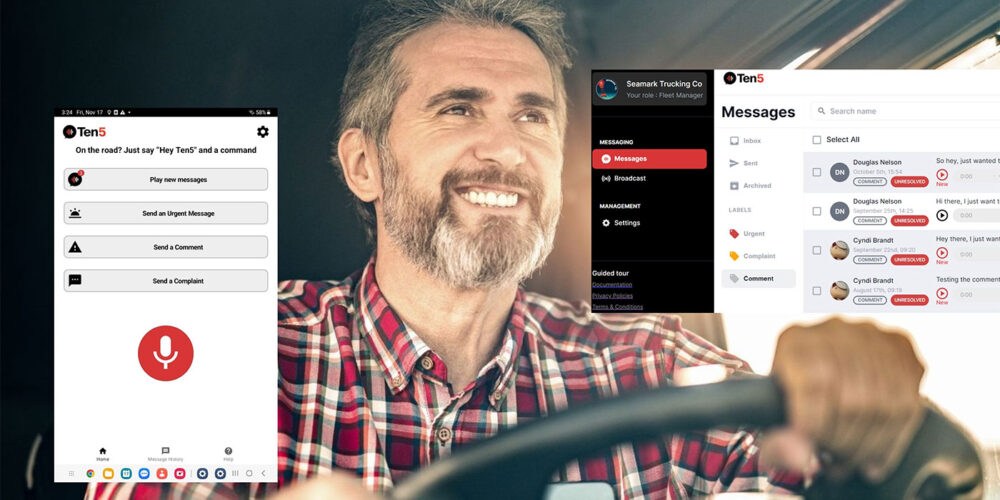Imagine this: You’re the star running back of the football team of your choice. Let’s call them the Cleveland Browns (I’m Northeast Ohio born and bred; work with me here).
You love your job, but Commissioner Roger Goodell has mandated that before any player can run the football into the end zone, they need to fill out some paperwork detailing who gave them the ball, how many snaps they’ve already taken, and their intended route. Oh, and he’ll also need you to check in with your coach using a Razr flip phone.
As your frustrations mount, you discover other teams are giving their players more powerful mobile devices and telematics systems to expedite the work, allowing the player to focus on the job they’re being paid to do in the first place: scoring touchdowns.
Do you decide that the Browns, who expect you to deliver a daily Pro Bowl performance with your company-provided flip phone, still deserve your talents? Or, maybe you see all this overhead as a sign that it’s time you hang up your shoulder pads for good.
Here’s the thing – your drivers feel the same way. Recording load and route data, checking in with dispatch, logging hours of service (HOS) (the FMCSA Final Rule change just took effect in September) … given the choice, drivers would rather be, well, driving. It’s no secret, and telematics companies will tell you that driver workflow directly relates to driver retention.
“If the driver has to fill in duplicate paperwork, or scan a document multiple times, or make a call to dispatch when they arrive, rather than the workflow systems triggering these events automatically, then that stress builds up,” says Chris Orban, vice president of data science at Trimble. “There is no field in the database for a driver to say, ‘I did 30 minutes of work that felt pointless to me and made me tired.’ A tired, frustrated driver will find someplace else to work!”
Driver retention is difficult enough in today’s environment, so it makes sense to simplify drivers’ lives, especially when the solution doesn’t take much time or energy on the fleet manager’s part.
“Employees want to be able to focus on the job at hand, and not on menial tasks or processes,” says Kevin Aries, head of global product success at Verizon Connect. “When mobile solutions can replace outdated systems, and those solutions are easy to use, everyone wins.”
What drivers and managers want from workflow
This heading isn’t fair, because there isn’t a solution out there that will satisfy every driver and fleet universally; everyone has their own preferences when it comes to workflow.
However, Sean McGee, director of product management at Samsara, says if driver retention and satisfaction are the goal, fleets should be thinking beyond the specific applications drivers are using. While the application is important, McGee says it’s more important to focus on the entire technology experience. Do drivers need to learn the nuances of a new device or can they use the tablet they’re already used to? How easy is it to navigate through their daily activities? Is communicating with managers a chore or a motivator?
McGee says there are three broad workflow considerations that should be discussed before choosing the right solution for your fleet. The first is deciding the type of devices your drivers can use to manage their workflow. Second, determine how easy it is for drivers to access task-related information. Workflow applications that can assist drivers in their daily activities can have a long-term impact on driver retention, McGee says, and guided workflows can be an effective way to help drivers navigate their daily activities and help them reduce some of that mental load.
Finally, he says, there’s communication. Keep information like company policies and news as part of the driver’s workflow so they don’t miss an update out on the road.
The latest in driver workflow
McGee says Samsara homed in on these workflow considerations, in addition to giving drivers access to the right information at the right time, in the company’s Samsara Driver App. The app lets drivers log their HOS, access route assignments, perform pre- and post-trip inspections and complete forms on the go. It’s available on any Android or iOS device, and McGee says he and his team will continue to add new features and improvements based on driver feedback.
“For example, submitting forms for equipment inspections, shipping paperwork, etc. can be time-consuming and prone to error. We learned that forms can be complex, and drivers may need to use multiple forms for a single task,” McGee says. “To help with this, we updated our ‘Documents’ feature within the Driver App to enable barcode scanning and conditional formatting. This allows drivers to capture new types of information and minimize manual input, which improves data quality at scale.”
Verizon Connect offers fleets a portfolio of mobile applications to help drivers receive dispatches, manage schedules, navigate roadways, inspect vehicles, maintain compliance and communicate with the office, and Aries says the company’s latest advancement, the Verizon Connect Reveal Field App, “reinvents the way drivers interact with their management team and end-customers.”
“By automatically providing customers with ETAs or giving customers the ability to rate their service, drivers and technicians, this app offers a game-changing customer experience that’s traditionally been reserved for large and enterprise customers and puts it in the hands of small businesses.”
Aries adds fleet managers who are Verizon customers receive business discounts on smartphones and tablets, and can use solutions like a Mobile Device Manager to better control and deploy apps.
Another effective driver workflow strategy is to pack every workflow element the driver would ever need into one mobile communication solution. That’s how Geotab, in partnership with Eleos, approached its latest driver workflow offering earlier this year with UNIFY, designed for Class 8 transport and logistics fleets. It combines a customer customizable, open fleet management system, a comprehensive driver workflow platform, data insights and a FMCSA-compliant ELD.
“UNIFY helps connect fleet managers and drivers through one central mobile app to improve routing, visibility and productivity,” says Stephen White, senior business development manager, Class 8 market at Geotab. “This solution is accessible through a pre-loaded enterprise-grade tablet and leverages Geotab’s GO device with Eleos’ custom workflow mobile app development platform to indicate when a load is pushed to a driver, who can update the system when delivered in real time.”
White says Geotab also allows fleet managers to gain insight into how well their drivers are performing on the road.
“Drivers will receive a score on their driver scorecard report that is based on their ability to adhere to predefined safety rules regarding speeding, seat belt usage and harsh braking and acceleration,” White says. “Fleet managers can choose to identify and potentially reward their top-performing drivers. Driver recognition will not only help improve retention but it will also motivate other drivers to improve their performance.”
Driver workflow is a core functionality in Trimble’s transportation management systems (TMS), as well as in the company’s telematics devices, says Trimble’s Orban. He says Trimble gives fleets the ability to automate arrivals and departures, as well as trigger alerts when certain events are detected, allowing the driver to focus on their most important task: driving.
“These workflow engines can be either configured quickly by the customer, or deeply customized in partnership with Trimble’s Professional Services, to meet whatever unique operation the carrier might require,” Orban says. “The connection between the TMS and telematics devices is critical to making sure that the right data gets to the right place at the right time, and is a core part of our Trimble Cloud Exchange (TCX) platform, as well as our ‘One Trimble’ strategy to bring together streamlined integration across all Trimble solutions. Through TCX, a variety of telematics devices and operational systems can all communicate with each other in a secure, single platform.”
Looking for more on improving driver workflow? We’ve got it:













